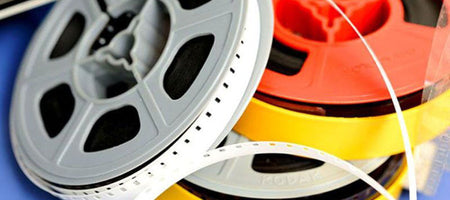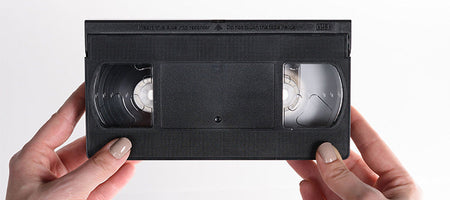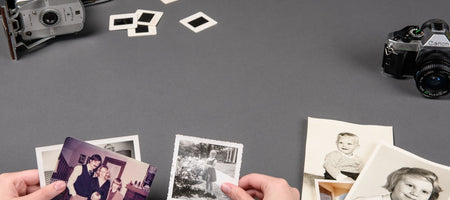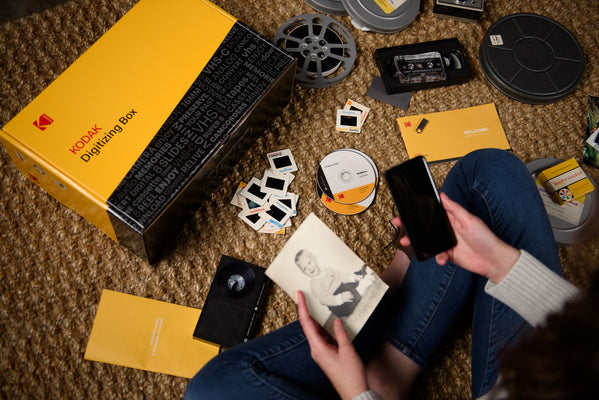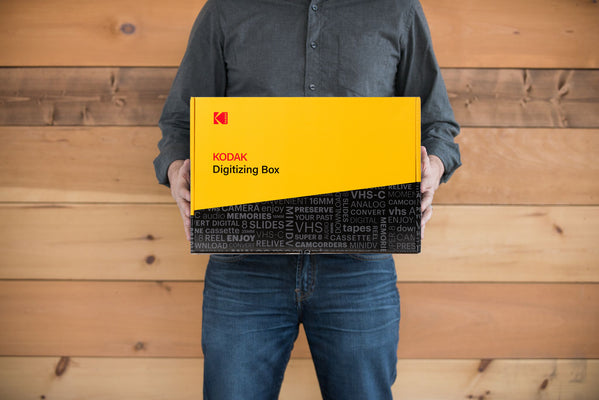The advent of the camera phone has made recording, sharing, and reliving family memories easier than ever. However, recording and viewing these precious moments wasn’t always so easy!
If your fondness for recording and reliving your favorite memories is generational, you might find that some of those irreplaceable recollections are stored on film taken with the family camera in the “golden days.”
Why the Difference?
Eastman Kodak’s initial film kits did not sell items separately, and cost a whopping $325 in an era where a new car could be purchased for $550. Because motion picture was still a relatively new technology in the hands of the average American, a spool of film itself cost $6, which is the equivalent of about $100 today! Concerned with the crashing economy during the Great Depression, Eastman Kodak released 8mm film in 1932 as a more cost-effective alternative to previous formats, creating the same running time with a fraction of the typical length needed for 16mm film. The original 8mm film was used by professionals and amateurs alike.
Three decades later, Eastman Kodak again increased accessibility for the average American with the release of Super 8mm film, which upgraded the image quality of the film by increasing the size of the frame. Along with this came the Kodak Instamatic Movie Camera and the easy-to-load cartridge known as a “Kodapack.” If your film has long since lost its box, figuring out what type of film you have can be a bit of a head scratcher!
How Can I Tell What I Have?
If your film has lost its box, no worries! There are some quick and easy ways to figure out whether you have Super 8 film or its predecessor, the original 8 millimeter film.
Freeze Frame
The initial 8mm film released in 1932 has a smaller frame, the part of the film that actually captures the image, at just 4.5 mm. You’ll notice that the frame itself fills only about 57% of the film’s full width of 7.9 mm. Super 8mm film, however, has a much larger frame size, filling about 73% of the film’s full width. For a sharper image, Kodak increased the size of the frame to 5.79mm. The frame on the Super 8mm film is 50% larger than the frame on the original 8mm film, so you can easily spot which type of film you have by examining the size of the frame against the full width of the film.
Follow the Leader
If your film is stored in canisters, one of the easiest ways to see what type of film you have is to check the leader tape, also known as the threading film. This is more convenient because you won’t have to unroll your film. You’ll notice that the tape has sprocket holes running along the side. These holes also run the entire length of the film, which allows the projector to pick up and move the film. The leader tape/threading film must match the film itself. On 8mm film, you’ll see that the sprocket holes are large and rectangular, due to the smaller frame size. Super 8mm film has much smaller sprocket holes that are almost square. When researchers were examining methods to increase the frame size and image quality in the Super 8mm film, it became clear that it was necessary to reduce the sprocket size to accommodate the large frame without increasing the overall width of the film itself.
Fall in Line
If you’re still a bit unsure about which type of film you have, you can confirm by checking how the sprocket holes are aligned with the image frames. On the original 8mm film, you’ll see that the sprocket holes are aligned where the image frames meet each other, essentially allowing the projector to grab and move the film between each frame. However, with Super 8mm film, you’ll see that the sprocket holes are aligned with the center of each image frame, making the difference between the two film types easy to spot.

